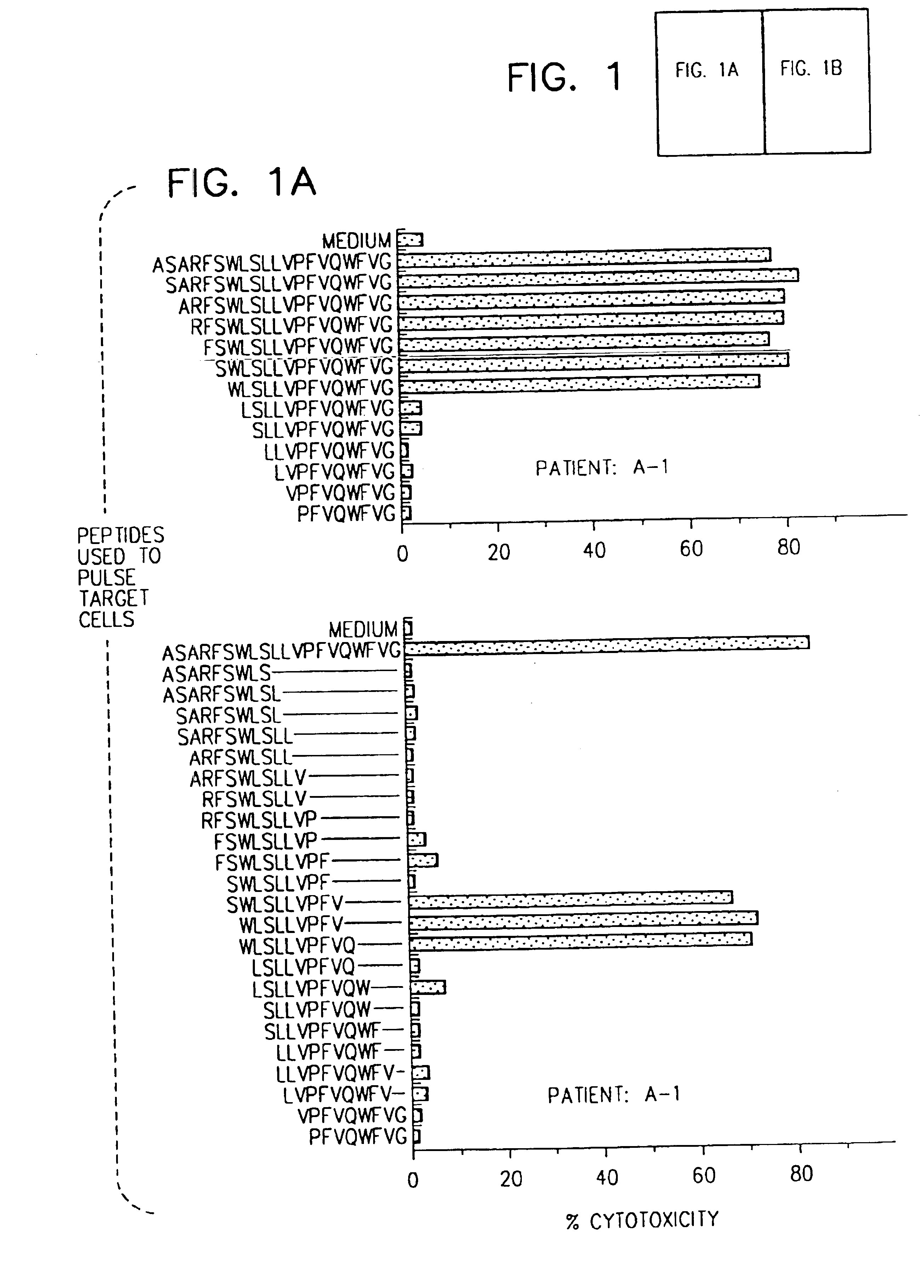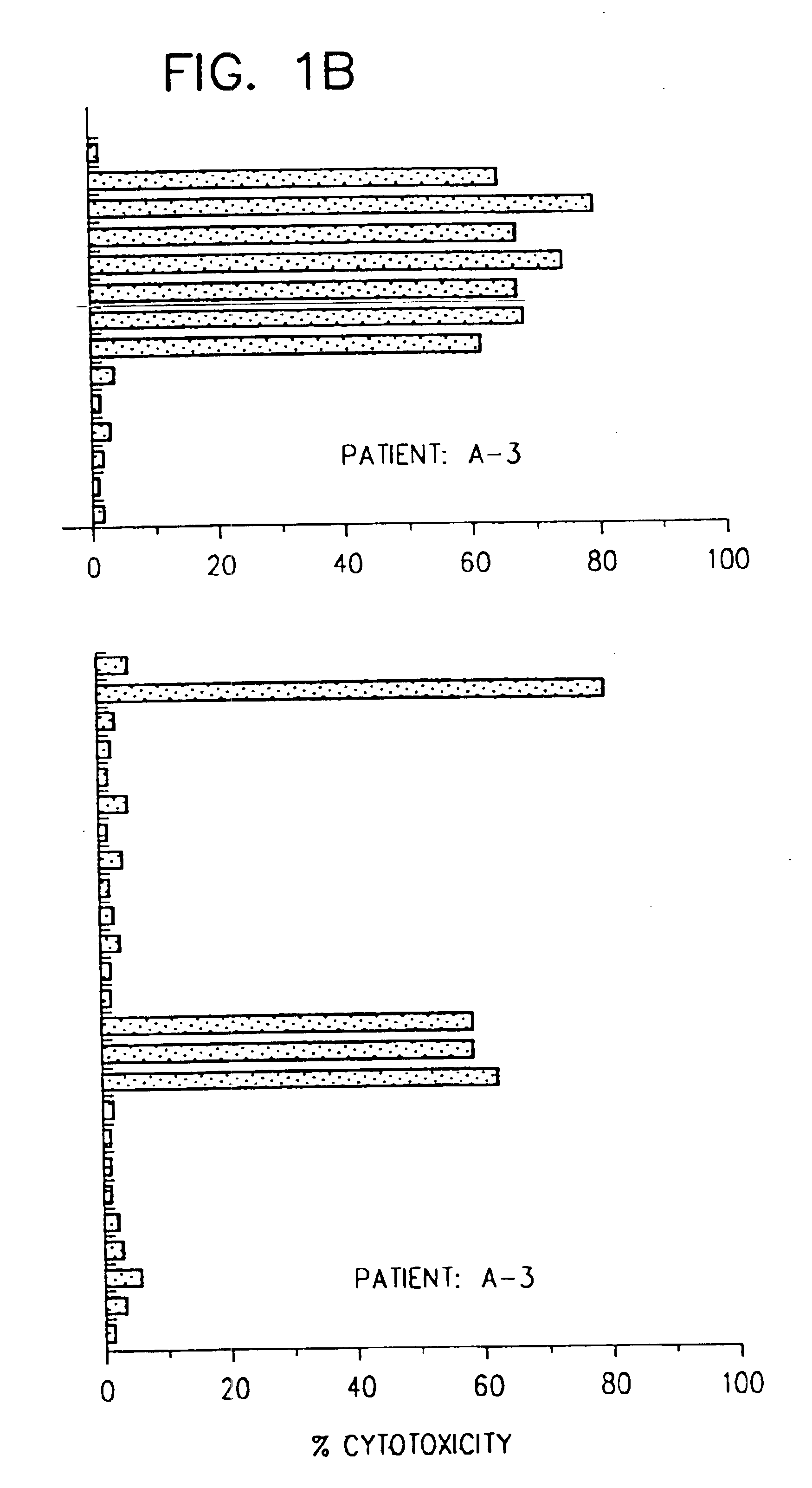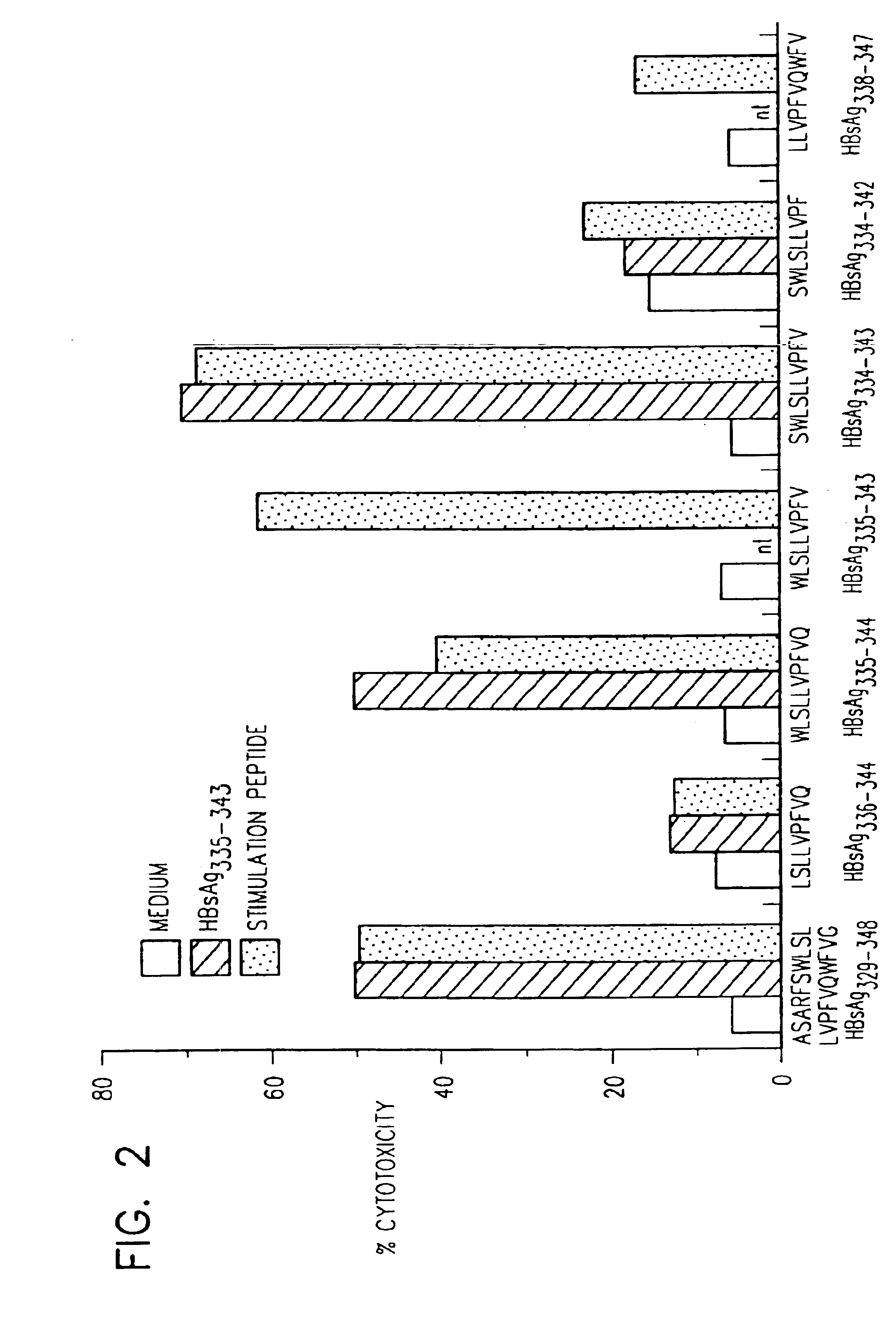Peptides for inducing cytotoxic T lymphocyte responses to hepatitis B virus
a t lymphocyte and peptide technology, applied in the field of peptides for inducing cytotoxic t lymphocyte responses to hepatitis b virus, can solve the problems of difficult to accurately predict the sequence of an antigenic protein, the contribution of ctls to immunity to hbv antigens is difficult to assess, and the sequence of ctl-recognizable epitopes is not yet predictable, so as to prevent hbv infection, enhance t lymphocy
- Summary
- Abstract
- Description
- Claims
- Application Information
AI Technical Summary
Benefits of technology
Problems solved by technology
Method used
Image
Examples
example i
Identification of CTL-specific HBenv Epitopes
[0088]This Example describes the identification of HBenv peptides which stimulated HLA-restricted CTL responses specific for HBV envelope antigens.
[0089]All patients included in the study were HLA-A2 positive. Thirteen patients (A-1 to A-13; Table II) were studied during an episode of acute hepatitis, 6 (C-1 to C-6) were chronically infected by HBV, and 6 uninfected healthy volunteers (N-1 to N-6) served as normal controls. The patients and their HLA haplotypes, determined using PBMC in microcytotoxicity testing with HLA typing trays (One Lambda, Canoga Park, Calif.), are shown in Table II.
[0090]Diagnosis of acute hepatitis was based on standard diagnostic criteria. Diagnostic parameters included clinical (jaundice) and biochemical evidence of liver injury (ALT activity at least 20 fold greater than the upper limits of normal), together with serological evidence of acute HBV infection (presence of HBV surface antigen (HBsAg) and IgG anti-...
example ii
CTL Response to Seven HLA-A2.1 Binding Motifs in HBVenv
[0102]Seven ideal HLA-A2.1 allele specific binding motifs, defined as peptides between 9-10 residues in length that contain a leucine in the second position and a valine as the carboxy-terminal residue, are present in the HBsAg region of the HBV envelope protein (Table III). Based on the results obtained in Example I, the ability of these seven envelope peptides, plus the known HLA-A2 restricted HBV nucleocapsid epitope (HBcAg18-27), to stimulate a CTL response in 12 HLA-A2 positive patients with acute hepatitis B, was examined. For comparison, six HLA-A2 positive patients with chronic hepatitis and 6 uninfected normal controls were tested for responsiveness to the same panel of peptides.
[0103]
TABLE IIIHBV-derived HLA-A2.1 binding motifs and peptidesPeptideSequenceSeq. ID No.1HBcAg18-27FLPSDFFPSV232HBsAg201-210SLNFLGGTTV243HBsAg251-259LLCLIFLLV74HBsAg260-269LLDYQGMLPV95HBsAg335-343WLSLLVPFV106HBsAg338-347LLVPFVQWFV257HBsAg348-35...
example iii
Peptide Specific CTL Recognize Endogenous HBenv Antigen
[0113]The ability of HBsAg335-343 and HBsAg348-357 specific CTL to recognize endogenously synthesized antigen was examined by measuring their ability to lyse target cells that had been infected with two groups of recombinant vaccinia viruses which encode the large, middle and major envelope polypeptides derived from cloned HBV genomes of either the ayw or the adw subtypes of HBV.
[0114]Recombinant vaccinia viruses expressing the HBV large, middle and major envelope polypeptides (adw subtype) and a corresponding control wild type vaccinia were obtained (Smith et al., Nature 302:490 (1983); Cheng et al., J. Virol. 60:337 (1986); and Cheng and Moss, J. Virol. 61:1286 (1987), each of which are incorporated herein by reference). An independent series of recombinant vaccinia viruses expressing the same three HBV envelope polypeptides of the HBV ayw subtype was derived as follows. For expression of the HBsAg, an XhoI / SphI restriction fr...
PUM
| Property | Measurement | Unit |
|---|---|---|
| weight | aaaaa | aaaaa |
| weight | aaaaa | aaaaa |
| concentration | aaaaa | aaaaa |
Abstract
Description
Claims
Application Information
 Login to View More
Login to View More - R&D
- Intellectual Property
- Life Sciences
- Materials
- Tech Scout
- Unparalleled Data Quality
- Higher Quality Content
- 60% Fewer Hallucinations
Browse by: Latest US Patents, China's latest patents, Technical Efficacy Thesaurus, Application Domain, Technology Topic, Popular Technical Reports.
© 2025 PatSnap. All rights reserved.Legal|Privacy policy|Modern Slavery Act Transparency Statement|Sitemap|About US| Contact US: help@patsnap.com



